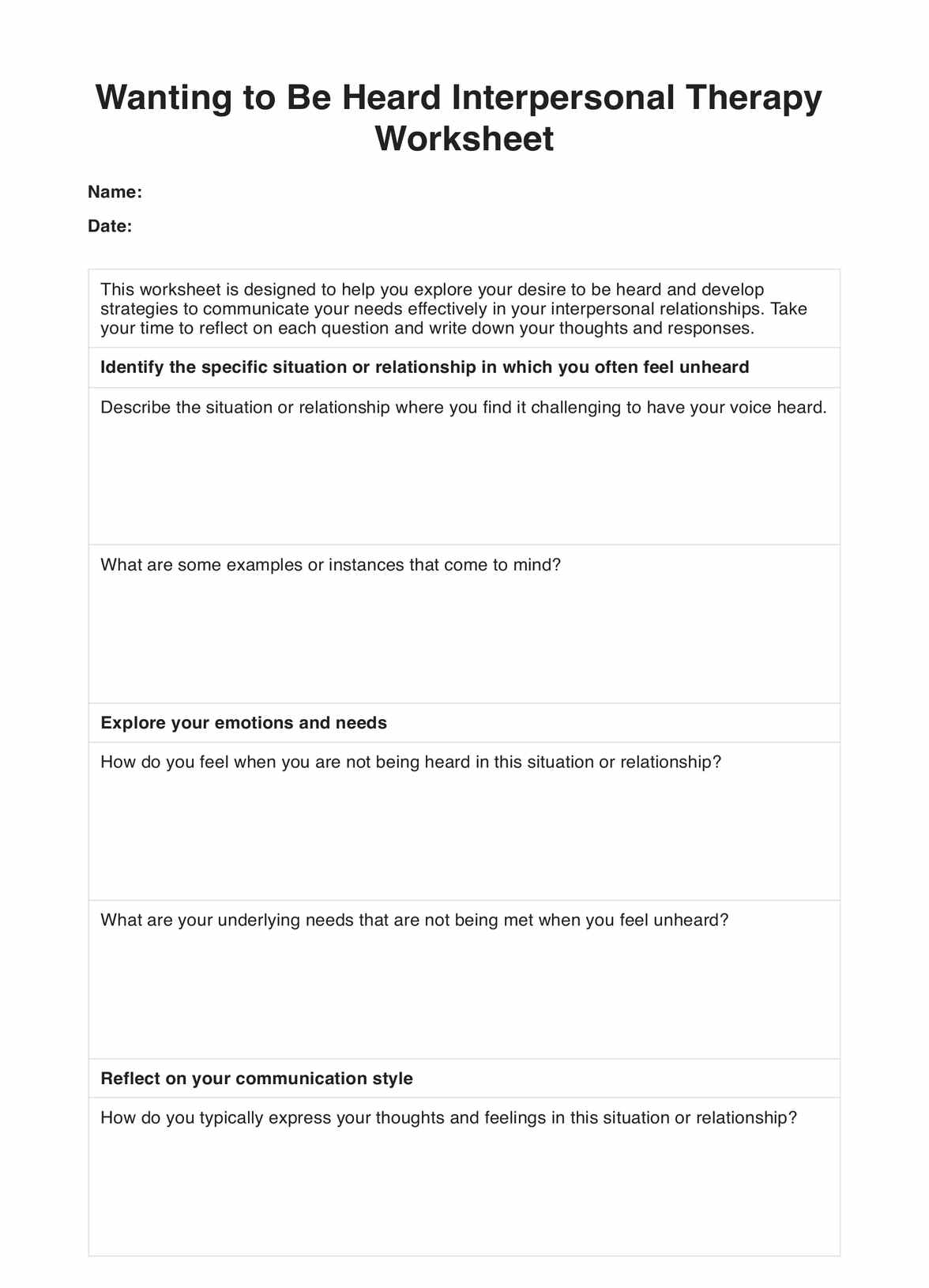The Wanting to Be Heard Interpersonal Therapy Worksheet is typically used during in-person or online therapy sessions. It can be used in individual, couple, or family therapy sessions to help clients explore and identify behavioral patterns.

Wanting to be Heard Interpersonal Therapy Worksheet
Get a free Wanting to be Heard Interpersonal Therapy Worksheet for your practice. Download our template and PDF example today!
Use Template
Wanting to be Heard Interpersonal Therapy Worksheet Template
Commonly asked questions
Mental health professionals, such as psychologists, social workers, marriage and family therapists, and counselors, can use the Wanting to Be Heard Interpersonal Therapy Worksheet with their clients. It can also be used as a self-help tool by individuals working on their communication and relationship skills.
Depending on the client, the Wanting to Be Heard Interpersonal Therapy Worksheet typically takes 30-45 minutes to complete.
EHR and practice management software
Get started for free
*No credit card required
Free
$0/usd
Unlimited clients
Telehealth
1GB of storage
Client portal text
Automated billing and online payments











